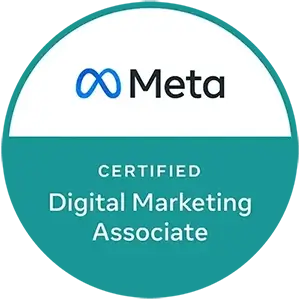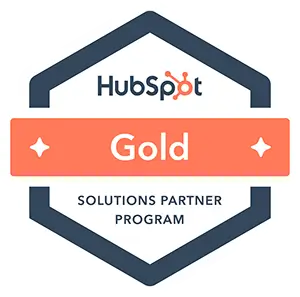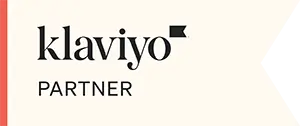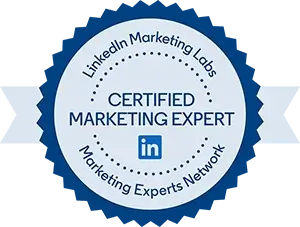What is SEO?
Simply put, the goal of SEO is to make a website attractive to search engines (like Google , for example). Achieving higher rankings in search results can significantly increase the number of visitors to your website.
To summarize how search engines work , it can be said that they use algorithms to "read" and index websites. To do this, algorithms take into account many factors, such as the relevance of the content to the user's search, the quality (and number) of external links pointing to the site, as well as the overall user experience.
Why is SEO so important for SMEs?
Experts agree on one thing: SEO is essential for small businesses in particular . A well-crafted SEO strategy can help SMEs stand out from the competition and generate high-quality organic traffic to their website. SEO is therefore an effective way for businesses of all sizes to raise brand awareness, attract new customers, and build a strong online presence.
The benefits of an effective SEO strategy
A well-implemented SEO strategy offers many benefits . According to HubSpot , for example, these benefits include:
- increased online visibility;
- an increase in organic traffic directed to the site;
- an improvement in the company's credibility;
- greater customer confidence;
- an increase in conversions and sales recorded;
- and much more!
In short, SEO is a long-term strategy that, when done correctly, can deliver an excellent return on investment style="font-weight: 400;"> (often referred to as ROI ).
Understanding the different types of search results
In order to fully understand the benefits of SEO , it is important to differentiate between the different types of search results: organic, paid, and local.
- Organic results are the unpaid results that appear based on their relevance to the user's search query.
- Paid results , on the other hand, are advertisements that companies pay for in order to appear at the top of search results.
- Local results show users nearby businesses and places that match their query.
Key Ranking Factors
According to leading references in the field, several ranking factors are used by search engines to determine the position a web page will be assigned. These include:
- the relevance of the proposed content ;
- the authority of the site (measured among other things by the quality and number of inbound links);
- as well as the user experience (UX) as a whole, notably via the site loading speed, mobile usability, and several other more technical points.
Common SEO Strategies
There are, of course, many different SEO strategies. But some of the most common include:
- research and optimization of keywords used when writing;
- on-page optimization (quality content, structure, titles, meta descriptions, etc.) ;
- off-page optimization (such as creating quality backlinks for example);
- local SEO ;
- as well as content marketing style="font-weight: 400;">.
Mistakes to avoid
Throughout these strategies, there are still some mistakes to avoid style="font-weight: 400;">:
- excessive use of keywords;
- neglecting the mobile optimization of the site;
- not investing in quality content;
- failing to include good links.
Before going any further, we can already remember that, for any company looking to improve its online presence , several elements are necessary: ensuring that it has a basic understanding of SEO , realizing its importance for SMEs, and taking into account the various advantages offered by the implementation of a good SEO strategy . By knowing the most common natural referencing strategies, as well as the typical mistakes to avoid, companies can thus develop effective strategies allowing them to stand out from the competition and attract more customers.
SEO Glossary
To help you navigate the subject, here's a short glossary of the essential terms used when it comes to SEO and web marketing . Understanding the basic vocabulary associated with the field will help you navigate the full spectrum of SEO concepts on the web.
- SEO (Search Engine Optimization) : The art of optimizing a website with the aim of improving its visibility on all search engines.
Example: Using relevant keywords in titles helps improve your site's SEO .
- SERP (Search Engine Results Page) : Results page displayed by a search engine in response to a query requested by the Internet user.
Example : A Google search style="font-weight: 400;"> for "running shoes" will display a SERP that first displays various shoe retail sites, based on relevance.
- SEM (Search Engine Marketing) : A web marketing strategy involving improving the visibility of specific sites in search engine results pages through paid advertising.
Example : Using Google Ads to target specific keywords and increase traffic to your website.
- SMM (Social Media Marketing) : Using social media platforms to promote a product or brand.
Example : Using Facebook and Instagram to promote a new clothing line and its associated products.
- Backlink : Name given to a link from another website pointing to yours .
Example : Getting a backlink from a well - known fitness blog to your athletic shoe store can help boost your website's credibility through the quality of that link.
- Keyword : Word or group of words entered by a user in a search engine.
Example : “Chocolate cake” is a popular keyword for a cooking blog.
- Long-Tail Keywords : Longer, more specific keywords, often less competitive.
Example : “Best running shoes for marathons” is a good example of a long tail keyword to complement the regular keyword “running shoes.”
- LSI (Latent Semantic Indexing) Keywords : Keywords related to or synonymous with a main keyword, generally part of the same lexical field.
Example : For the keyword “diet,” LSI keywords might include “weight loss” and “healthy eating.”
- On-Page SEO : Optimization of individual elements of a web page.
Example : Use an appropriate H1 tag for the main title of your blog post.
- Off-Page SEO : Optimization of factors external to a web page (such as the use of backlinks, for example).
Example : Building links from authority sites to your own site to improve its ranking.
- White Hat SEO : Using SEO techniques that comply with search engine guidelines and rules.
Example : Focus on quality content to attract natural backlinks .
- Black Hat SEO: Use of deceptive or non-compliant SEO techniques.
Example : Hiding keyword-stuffed text on a page to trick search engines. **Note that this is a risky strategy and should be avoided.**
- Meta Tags : HTML codes that provide search engines with specific information about the content of a web page.
Example : Use the meta description tag to provide a good summary of the page to search engines.
- DA (Domain Authority) : Score predicting a website 's ability to rank among search engine results pages ( SERPs ).
Example : A site with a high DA is therefore generally considered more reliable by search engines.
- UI (User Interface) : Set of visual and interactive elements that can be controlled by the user.
Example : A website with a clear menu, well-placed buttons and harmonious colors thus offers a good user interface (UI).
- UX (User Experience) : Overall user experience when interacting with a website.
Example : Improving loading speed helps optimize UX.
- Anchor Text : Clickable text used as an anchor for a hyperlink in web content, particularly for internal linking or external links.
Example : Using “ Click here to learn more about our products ” as anchor text redirecting to another page.
- Crawl : The process by which search engines discover and index web pages.
Example : Googlebot "crawls" your site to index new pages.
- Robots.txt : File used to tell search engines which pages not to crawl or index.
Example : Use a robots.txt file to prevent private pages from being indexed.
- Sitemap : Directory designed to group together information on a site in order to facilitate searches by Internet users (UX) as well as the indexing of the web page by search engines.
Example : Create a website map to group its different pages.
- XML Sitemap: A specific file submitted to search engines to help them understand the structure of a website .
Example : Submit a sitemap via Google Search Console to facilitate indexing.
- Canonical URL : Preferred URL (address) of a page, to avoid duplicate content.
Example : Use a canonical tag to indicate the main version of a product with different variants.
- 301 Redirect : Permanent redirection from one URL to another.
Example : Using a 301 redirect to take visitors from an old page to a new one.
- 404 Error : Error message indicating that the requested web page was not found.
Example : Customizing a 404 page helps guide visitors to other sections of your site.
- Alt Text: Descriptive text for images, used by search engines and screen readers.
Example : Adding the ALT Text "Dog playing in the park" to an image of the animal doing this activity.
- CTR (Click-Through Rate) : The click-through rate represents a percentage of the number of clicks received on a link, compared to the total number of impressions.
Example : A CTR of 5% therefore means that, out of 100 impressions, 5 people clicked on the ad.
- KPI (Key Performance Indicator) : Indicators used to measure the success of an SEO campaign.
Example : Conversion rate is an important KPI to assess the effectiveness of a campaign.
- EMD (Exact Match Domain) : Domain name that exactly matches a target keyword or phrase.
Example : If you are targeting the keyword “buy books online”, then an EMD could be “buybooksonline.com”.
- Citations or NAP (Name, Address, Phone number) : Contact information across the web, important for local SEO.
Example : It is therefore recommended to ensure that the NAP is consistent across your site, Google My Business style="font-weight: 400;">, as well as online directories.
- TF-IDF (Term Frequency-Inverse Document Frequency) : A statistical measure used to assess the importance of a word in a document relative to a whole.
Example : Using TFIDF to find the most relevant keywords for specific content.
- CDN (Content Delivery Network) : A network of servers used to quickly deliver the content of a website to the user.
Example: Using a CDN to reduce the loading time of images on a website .
- AMP (Accelerated Mobile Pages) : Format for creating mobile pages that load faster.
Example : Using AMP to make a news page more responsive to loading on mobile devices.
Conclusion
SEO mastery is an undeniable asset in today's digital world. In an age where digital dominates and organic traffic can be the lifeblood of a business , understanding and applying the fundamentals of natural referencing is more important than ever. This article has provided an in-depth overview of SEO, covering its importance, benefits, methodologies, and common mistakes to avoid .
Additionally, thanks to the detailed glossary, even beginners in the field can now navigate the subject more easily. It's essential to remember that SEO isn't a one-time solution, but a long-term strategy that requires perseverance, adaptation, and continuous learning.
By investing in solid SEO practices , businesses, large and small, can not only improve their online visibility but also establish a robust and lasting digital presence.
- PBN (Private Blog Network) : A network of websites used to create links to a main site in order to improve its SEO ranking .
Example: Building a PBN with the goal of increasing a website 's DA.
** Be careful because this practice is often considered Black Hat SEO . **
Discover The Ultimate SEO Guide
Whether you're a business owner or decision-maker, maximize your online visibility with The Ultimate Guide to SEO . Written by experts, this guide offers key strategies to excel in search engines. Don't miss this opportunity to invest in your digital future. Get your guide now.
To learn more about SEO and artificial intelligence
At Bofu, we approach SEO in all its dimensions: technical, editorial, local, multilingual, and even in connection with the new capabilities of artificial intelligence.
Explore our specialized SEO services :
Also discover our analyses on the impact of AI in the world of SEO:
And if you want to deepen your knowledge of traditional and advanced SEO:

















